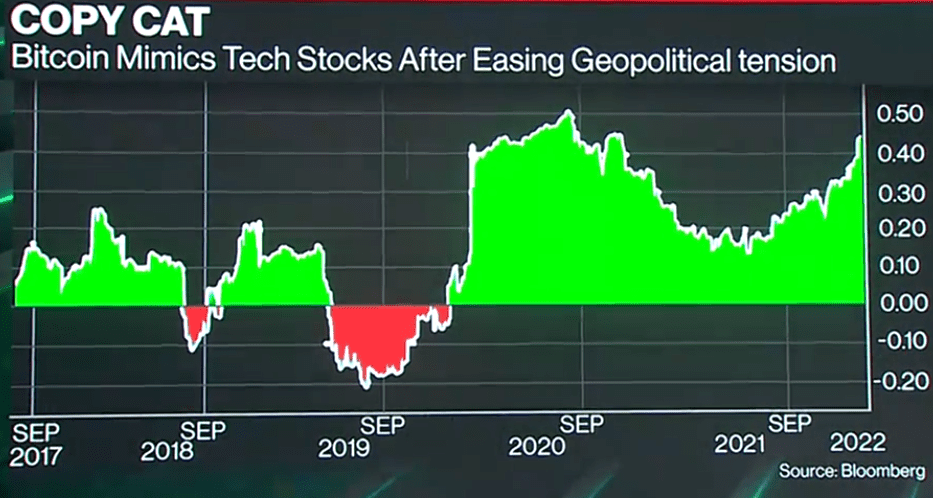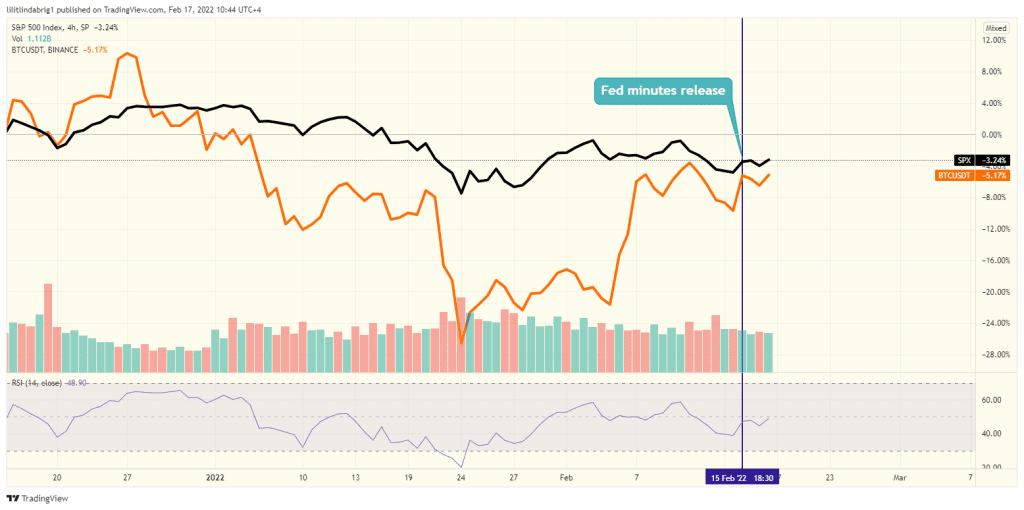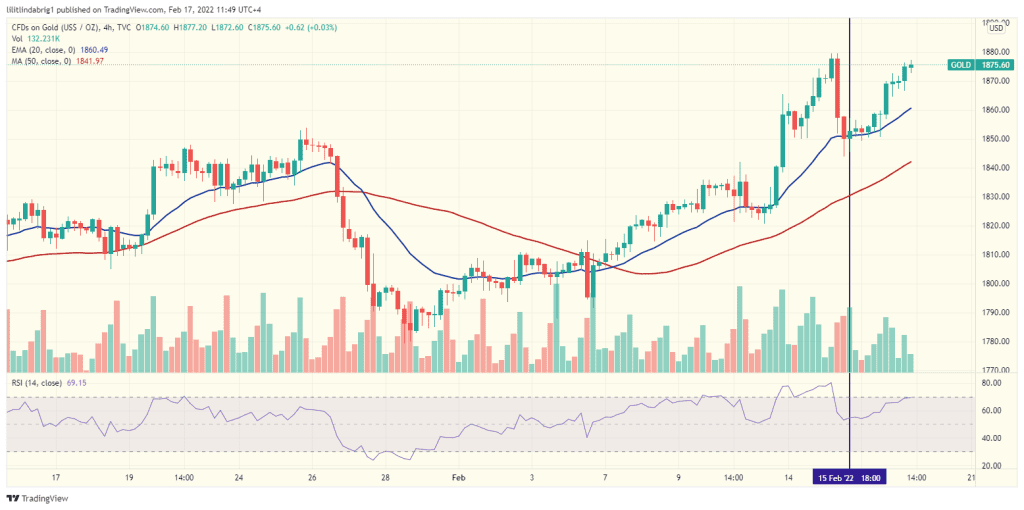Key Takeaways:
- Bitcoin exhibits hightened correlation to the risk-on asset class.
- The decline appeared against the Fed’s latest meeting.
- Experts believe the Fed did not fulfill expectations as inflation grows.
- Gold spiked, as appetites for safe-haven assets grew against the brewing Russia vs. Urkaine conflict.
YEREVAN (CoinChapter.com) – Bitcoin (BTC) failed to break above $45,000 on Feb. 15. A selloff near the local top led its price to nearly $43,650 as of this Thursday, a decline that mirrored similar downside moves across the risk-on market.
A recent company report from U.S. financial giant Bank of America confirmed the rising correlation between Bitcoin and other risky assets. Also, according to the study “Global Cryptocurrencies and Digital Assets,” the correlation has been ongoing since 2021 and remains relevant in Q1 2022.
Bitcoin and risk-on assets
In particular, Wall Street reporter Sonali Basak agreed with the outlook, citing the correlation between Bitcoin and tech-related stocks. Furthermore, the reporter called it “copycat” behavior, hinting at weakening the trend as the year progresses.

Joey Krug, the co-CIO of Pantera Capital, backed the idea, expecting the decoupling to occur in the upcoming months.
We think over the next number of weeks, crypto is basically going to decouple from traditional markets and begin to trade on its own again.
said the executive.
Also read: Bitcoin market shares increased correlation with other risk assets, says Bank of America.
However, as of Feb. 2022, the correlation remained intact.
In detail, the capital inflow into risk markets tends to fall against the growing inflation and destabilization of the U.S. dollar and vice versa. Thus, after the latest Federal Reserve minutes confirmed the upcoming hawkish stance, the risk asset market should have attempted a recovery, but it didn’t.
So, what happened?
Federal Reserve confirms rate hikes—or does it?
According to the latest meeting minutes released on Wednesday, Fed officials plan to set their initial multiple rate hike plan into motion.
Participants observed that, in light of the current high level of the Federal Reserve’s securities holdings, a significant reduction in the size of the balance sheet would likely be appropriate.
read the meating summary.
However, the policymaking Federal Open Market Committee (FOMC) decided that the tapering won’t start until Mar. 2022, citing concern over financial stability and “substantial risk” caused by loose monetary policy.
So, despite the seemingly hawkish tone, the Fed’s indecisive approach to tackling inflation caused a decline in risk-on assets, as they tend to tumble in uncertain times.

Also read: Bitcoin cannot be superseded by other cryptos as a store of value – Fidelity researcher.
Moreover, Simona Mocuta, chief economist at State Street Global Advisors, confirmed the Fed meeting’s inconclusive results.
The market correctly interpreted them as dovish relative to expectations. Frankly, I would call them anticlimactic.
she said.
On the other hand, the rising concerns over the Fed’s dovish policy spurred gold to settle higher.
Gold vs. growing inflation concerns
As CoinChapter expected over two months ago, the yellow metal went bullish as Fed hesitated to tackle the growing inflation. As a safe-haven asset, gold sold at $1875 for an ounce on Feb. 17, in the wake of a 1.34% increase after the Fed minutes release.

In detail, if risk-on assets correlate positively with a flourishing economy, safe-haven assets do the opposite. When the traders have concerns about economic stability, they often allocate their assets into low-risk markets like precious metals to hedge against the rising inflation.
Also read: Here’s how Gold and the U.S. Dollar may react to Fed’s tapering move.
Moreover, gold futures established roughly a three-month high at the start of the week. The uptrend came against the rising tension between Russia and Ukraine. Thus, Rohan Reddy, an analyst at ETF provider Global X, was optimistic about precious metals, given the geopolitical climate in the region.
Fears of a potential Russian invasion of Ukraine sparked demand for safe-haven assets. With perceived political risks increasing worldwide, demand for gold could continue to increase as investors look for store-of-value assets in times of uncertainty.
said the expert.
Accordingly, fading tensions between the neighboring countries could dent the demand for gold, benefiting risk-on assets instead. However, the Fed’s upcoming tapering policy and other global microeconomic factors would ultimately determine the fate of Bitcoin and the stock market for the near future.



